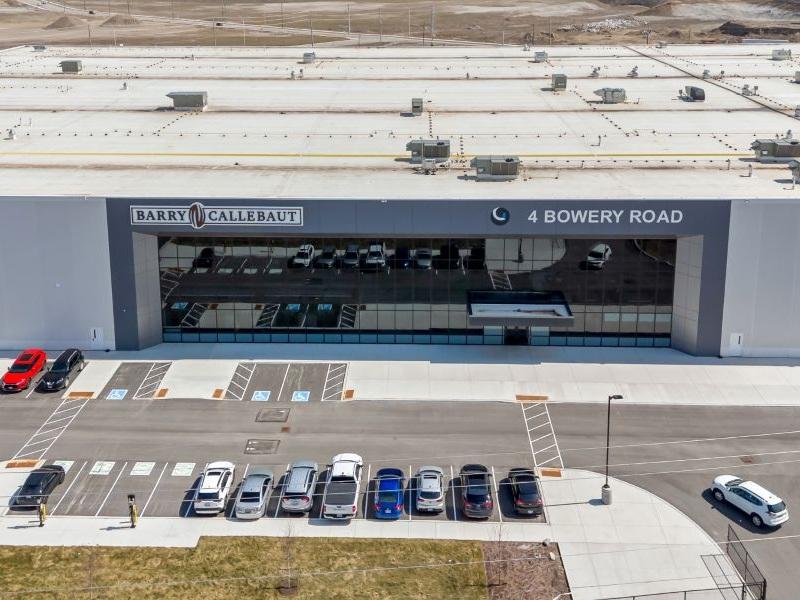I recently participated in my first Twitter Spaces discussion; essentially a call-in show on social media with hundreds of participants listening in and chatting.
One opinionated investor told the panel that industrial is headed for a crash. The market was too hot and industrial construction was booming, with tens of millions of square feet being built across Canada.
He had a number of salient facts that raised concern for industrial CRE, which were all true! And yet I completely disagree with his conclusion.
I've heard this skeptical sentiment about industrial from brokers as well; that surprised me as I tend to be more pessimistic than deal-makers in real estate.
And at my most recent conference, I fielded several questions along the lines of "can industrial really keep this up?"
Bear and bull arguments for industrial
I think it can, but let's outline the bear argument for industrial:
- Construction is at record high levels, triple the level of five years ago. Absolutely true: construction was high relative to long-term trends even before COVID, and it's higher still now.
- Rent growth cannot continue at the current pace. Some major markets are seeing 40 to 60 per cent yearly rent growth. At this rate, rents will be doubling every two years which isn't sustainable.
- Cap rates have dropped too much for industrial relative to other assets. This is also true; rates have dropped more than any asset class over the past 10 years and are now among the lowest ever recorded.
And yet . . . I am still bullish on industrial, even conceding all those points. How can that be?
While construction is high, it's still a very small percentage of the overall inventory.
Even with record high square feet under construction, this accounts for only ~2% of the total inventory in the country, which is in the billions of square feet of space.
If all the construction were miraculously completed tomorrow morning, we would still have a tight industrial market, well below "balanced."
And other major markets have far higher levels of development underway – in some U.S. metros like Atlanta or Dallas, the number is closer to seven or eight per cent.
Blackstone / Pure a big player
Foreign investors have developed an appetite for Canada industrial, with big private equity (PE) and institutional investors getting involved.
Blackstone, the world's largest PE firm (mainly via its subsidiary Pure Industrial in Canada) has been the No. 1 acquirer of Canadian industrial space during COVID.
While we see unprecedented prices for industrial rents, it's all relative – compared to London, Singapore, Los Angeles and other world markets, our rents look reasonable.
The unrest in Ukraine has also motivated some investors to redirect capital to the safety of North America generally and Canada specifically.
Additionally, the Canadian dollar has depreciated considerably in the past year (down about 12 per cent), making investment more attractive for those with Euros, Swiss francs or U.S. dollars.
Finally, there is a huge shortage of development land around most cities. Montreal, Toronto and Vancouver all have some form of "greenbelt" or farmland protection, which drastically restricts sprawl beyond a certain point.
Land constraints just one factor
These land constraints define the industrial market and the constraints aren't going away.
Removal of the greenbelt would be a seismic shift from the status quo and even more development-minded governments don't seem to have an appetite for that change.
The fundamentals of industrial are so outrageously strong that we're seeing unprecedented situations across the country:
- Yearly rent growth in Montreal exceeding 60 per cent;
- Vancouver achieving record high rents in Canadian history;
- Availability rates below one per cent in many markets;
- Canadian cities among the strongest major industrial markets in the world.
While this situation won't sustain forever, I still see a positive outlook for industrial in the near term.
The bigger question for industrial going forward is the future of e-commerce.
The industrial market is not driven by "old economy" industries such as resources, chemicals or manufacturing.
Instead the warehouse boom is based upon fulfillment centres for online purchases, covering everything from food to clothes to electronics to home furnishings.
E-commerce less mature in Canada
While e-commerce had been growing for years, COVID obviously supercharged the movement to shopping online.
This drove a tremendous expansion of the biggest players like Amazon, Costco, Walmart and the grocery giants in the suburban areas of most Canadian cities.
E-commerce usage has flattened out in 2022, foiling the predictions of unlimited growth. The reopening of shopping, entertainment and travel have dampened the share of dollars spent online.
And the e-commerce system is stretched, with shortages of warehouse workers and delivery drivers.
Nonetheless, e-commerce is less mature in Canada than in many other developed countries; concepts like same-day delivery or online grocery are relatively new to the market here, but are standard in the U.S. and elsewhere.
There's plenty of room to grow in the next few years and many previously "off-line" customers have discovered the ease of online shopping.
Between land shortages, investor interest and limited construction, there's still a bright future for the industrial leasing and investment market in Canada.









